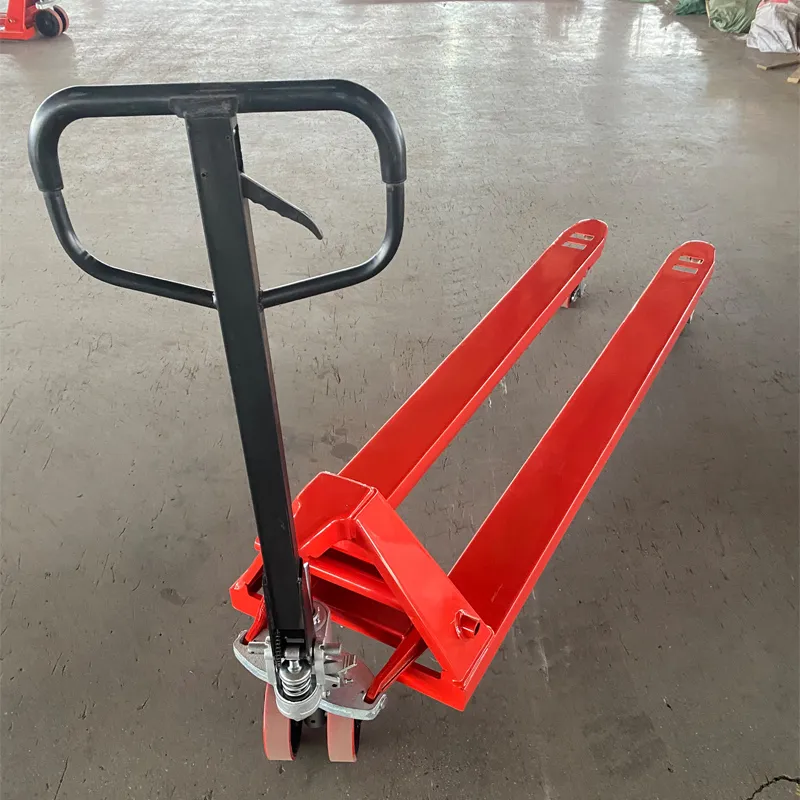


The Essential Guide to Pallet Truck Operation and Safety
Pallet trucks, also known as pallet jacks, are essential tools in warehouses, retail spaces, and manufacturing environments. Their design is simple yet effective, allowing users to easily lift and transport heavy loads on pallets without the need for complex machinery. Understanding pallet trucks and their operation is crucial for efficiency and safety in any workplace.
What is a Pallet Truck?
A pallet truck is a manual or electric device used to lift and move pallets, which are flat structures that facilitate the movement of goods. Manual pallet trucks are operated by hand, utilizing a hydraulic pump to raise the forks, while electric pallet trucks automate lifting and propulsion, reducing the physical effort required.
The basic components of a pallet truck include the fork arms, hydraulic system (in manual models), wheels, and a handle for steering. These features work together to provide a versatile, efficient means of moving goods quickly and safely.
Benefits of Using Pallet Trucks
One of the primary benefits of using pallet trucks is their ability to streamline logistics operations. In environments where heavy items need to be moved regularly, pallet trucks can significantly reduce the time and physical strain associated with manual handling. They are compact and can maneuver in tight spaces, making them ideal for crowded warehouses and retail aisles.
Moreover, pallet trucks are designed with safety in mind. When used correctly, they minimize the risk of injury associated with lifting heavy items. By using a pallet truck, workers can avoid the risks of musculoskeletal injuries that can arise from manual lifting.
Safety Considerations
While pallet trucks are generally safe, proper training and adherence to safety protocols are crucial. Operators should be trained to understand the weight limits of their equipment and the correct method for lifting and transporting loads. Overloading a pallet truck can lead to equipment failure and accidents.

When operating a pallet truck, it’s important to ensure the path is clear of obstacles. Sudden stops or sharp turns can result in tipping or loss of control, so smooth and gradual movements are best. Additionally, operators should wear appropriate footwear and avoid loose clothing that could get caught in the machinery.
Another critical aspect is maintaining the equipment. Regular inspections should be conducted to identify any signs of wear and tear, particularly in the wheels, hydraulic system, and structural integrity of the forks. Any damaged equipment should be reported and taken out of service until repaired.
Best Practices for Using Pallet Trucks
To maximize efficiency and safety when using a pallet truck, here are some best practices
1. Always Check the Load Before lifting, verify that the load is stable and within the weight capacity of the pallet truck. 2. Proper Positioning Ensure the forks are fully inserted under the pallet and the load is balanced to prevent tipping during movement.
3. Maintain Clear Visibility If the load obstructs your view, maneuver the pallet truck backward or enlist a spotter to help navigate.
4. Use Gradual Movements Accelerate and decelerate gently, taking corners and turns at low speeds to maintain control.
5. Stay Aware of Surroundings Always be mindful of your surroundings, especially when moving in populated areas or near pedestrians.
Conclusion
In conclusion, pallet trucks play a vital role in modern logistics, enabling efficient movement of goods with minimal physical strain on workers. However, safety and proper use are paramount. By following best practices and conducting regular maintenance, organizations can ensure that their pallet truck operations are both safe and efficient, paving the way for a productive and injury-free workplace. As technology advances, the future may bring even more innovations in pallet truck design and functionality, further enhancing their role in the supply chain.



